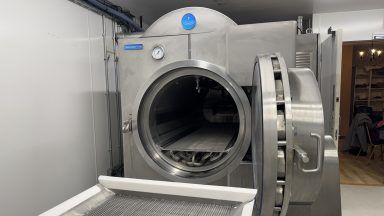Britain could get a swathe of giant so-called “water batteries” in the coming years, under a new scheme to boost investment into clean energy storage.
Ministers have given the green light to plans which make it less risky to develop and invest in pumped storage hydropower, a way of storing energy using reservoirs.
The sites work by buying electricity when it is cheap – for example, when wind turbines are spinning – to pump water uphill from a river or lake, where it is then held at the top.
Several are in the works, including one at Loch Ness in the Highlands, but officials estimate Britain needs around five times the amount of long duration energy storage facilities to hit net zero by 2050.
When electricity is more expensive or at times of higher demand, the hydropower sites release the water back downhill to generate more power for the grid.
The technology is not new and Britain has four such sites already in Scotland and Wales. One at Dinorwig, Snowdonia, is nicknamed Electric Mountain.
But there have been no new sites built for almost 40 years because they are expensive to develop, despite operating costs being comparatively low.
Ministers hope to make it easier to attract investment with a new so-called cap-and-floor scheme.
The model guarantees a minimum income for companies that want to develop the projects – the floor – in return for a cap on how much revenue they can generate from the sites.
Energy minister Michael Shanks said the plan would “increase our ability to store this energy for when the sun isn’t shining, or the wind isn’t blowing”.
He added: “We’re reversing a legacy that has seen no new long duration storage built for 40 years, and taking steps to unleash private investment in both established and new technologies.
“With these projects storing the surplus clean, homegrown energy produced from renewable sources, we can boost our energy security by relying less on fossil fuels, protect household bills, and help deliver our key mission to make Britain a clean energy superpower.”
Energy regulator Ofgem will design the scheme, with the first round of applications set to open in 2025.
Ministers hope the model will also support investment into new long duration energy storage technologies, like liquid air energy storage, compressed air energy storage and flow batteries, and Ofgem will also seek applications for these types of development.
A similar type of scheme is used to make it easier to invest in electricity interconnectors which connect Britain’s grid with other countries. Introduced in 2014, no floor payments have been made but developers have shared revenues with consumers.
It comes after a consultation on the scheme held under the previous Conservative government closed in March.
Beatrice Filkin, director of major projects at Ofgem, said: “Unlocking investment in this important technology is another significant step towards decarbonisation of the power system.”
Follow STV News on WhatsApp
Scan the QR code on your mobile device for all the latest news from around the country


 iStock
iStock
























